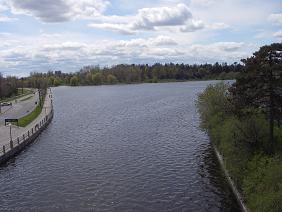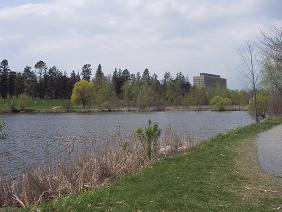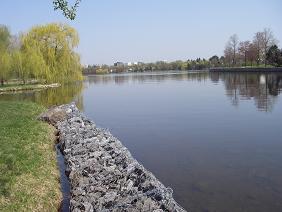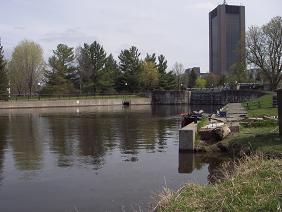Background:
Located in central Ottawa, Dow’s Lake is part of a man made canal system known as the Rideau Canal. The canal system was originally built for military purposes in the early 1800’s. Today it services mainly recreational boaters, anglers, and tourists. In the winter time the lake and the Ottawa reach of the Rideau Canal is home to the world’s longest outdoor skating rink. The Rideau Canal is regarded for its cultural, historic, recreational, and ecological value.
The lake and canal is also home to a variety of flora and fauna. Submergent macrophytes dominate the canal and lake, while a variety of fish including largemouth and smallmouth bass, pumpkinseed, bluegill, rock bass, northern pike, muskellunge, and carp. There are also abundant populations of brook silversides, golden shiner, blunt nosed minnows, and logperch. Black crappie, yellow perch, white sucker and the occasional walleye also complement this ecosystem.
Summary of Research Activities:
Currently our laboratory is involved in several research projects focusing on the reach between Hartwell’s Locks and downtown Ottawa including Dow’s Lake. The aim of these various research projects is to understand the coupled social-ecological Rideau Canal ecosystem to enhance management and conservation of this historic resource. Current efforts are focused on evaluating the spatial ecology of fish in the system and conducting a resource inventory. As this reach of canal is nearly drained completely during the winter period, there is immense interest in understanding fish behaviour and distribution under ice. Information derived from this research activity will enable Parks Canada to better conserve this unique natural and heritage resource in light of increasing development pressures and human use.
Current research efforts are focused on elucidating the fish-habitat relationships (snorkeling surveys, seine netting, angling, telemetry, water quality analysis), documenting the fish community (angler interviews, angling, minnow trapping, snorkeling, seine netting), quantifying and describing aquatic macrophyte dynamics (snorkeling surveys), and monitoring fish reproductive ecology (snorkeling surveys, seine netting). In many cases, this work represents some of the first known fisheries research and monitoring. Because Dow’s Lake is located adjacent to Carleton University, it provides many opportunities for undergraduate thesis projects. In addition, Dow’s Lake will be used for instructional purposes as part of the new undergraduate “fishy” course being developed for Carleton.
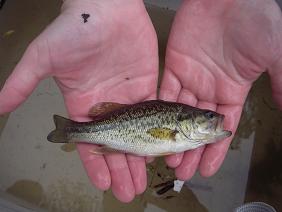
Spatial Ecology of Fish – Assessing Behaviour and Habitat Use with Biotelemetry:
In 2006, our laboratory embarked on a number of radio telemetry studies to provide information on the behaviour and habitat use of individual fish in the Rideau Canal. Work to date is considered preliminary and will be used to develop more focused research questions in coming years. At present, seven largemouth bass have been angled using conventional rod and reel and affixed with external radio transmitters (approx longevity of one month) to assess summer habitat use and movement.
We have recently partnered with the Ottawa Chapter of Muskies Canada to implant muskellunge in Dow’s Lake with long-life radio transmitters (>3 years life expectancy). The muskellunge will be tracked to document seasonal habitat use. During the open water months, fish will be tracked by boat, bicycle, and foot. In the winter, fish will be tracked by foot and by ice skating. |
